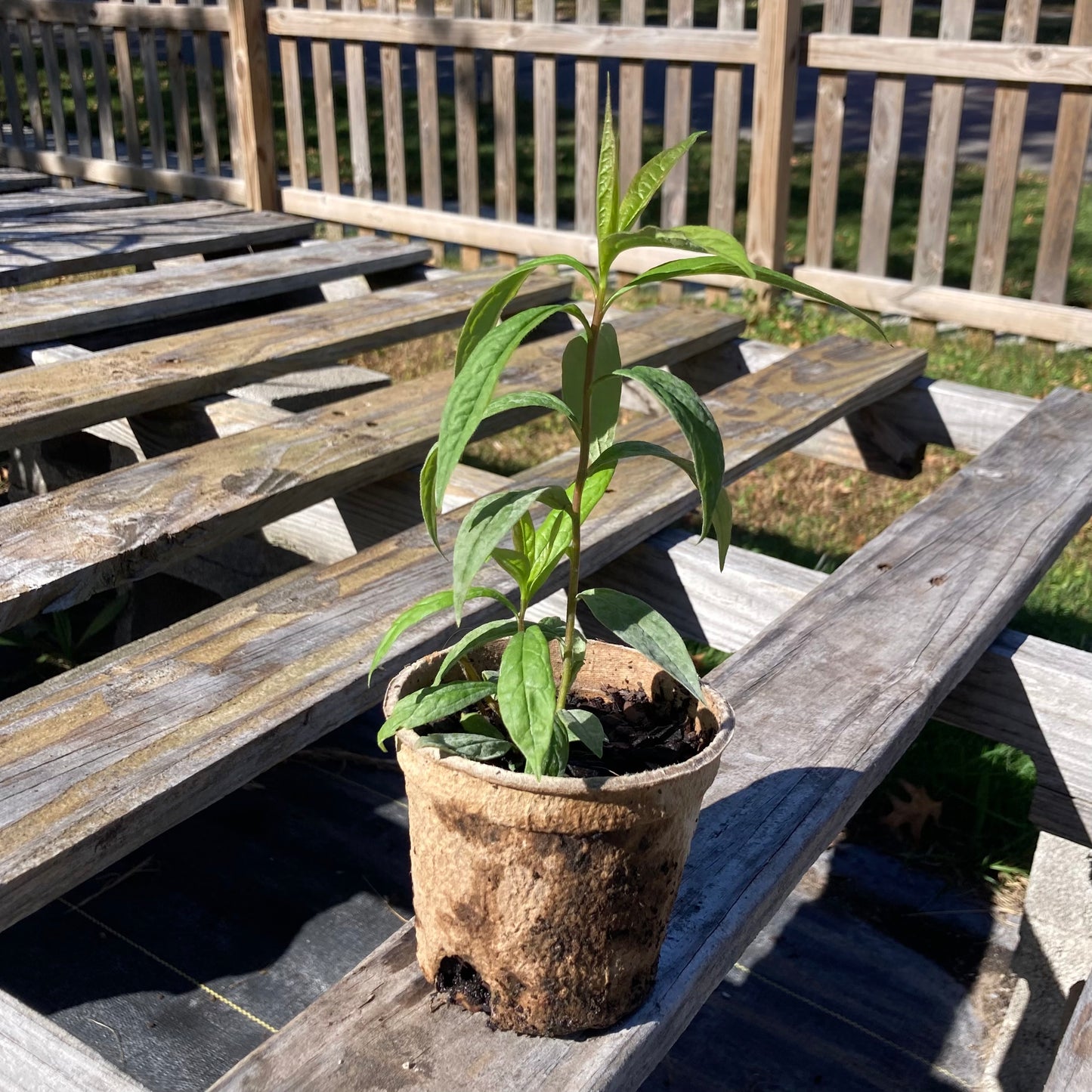Parasol aster
Doellingeria umbellata
Doellingeria umbellata
Couldn't load pickup availability
Sun/shade: Full sun to part shade
Soil moisture: Medium to wet
Height: 2-5'
Flowering period: August
Deer resistance: Medium
The shape of this whimsical wildflower has been likened to a small umbrella or parasol. The main stem branches outward to form a white floral canopy that blooms in August, attracting numerous bees, flies, wasps, and skippers.
Occurring in fields, wet meadows, and open, moist woodlands, parasol aster grows well in full to partial sun and wet to moderate moisture. The plant makes an especially nice addition to partially shaded wet areas and rain gardens. In these places it provides a rare white floral option during the month of August.
Parasol aster spreads by rhizome to form a slowly expanding cluster of plants. Its seeds are wind dispersed and may colonize nearby areas, especially patches of bare soil. This plant is not avoided by deer, but it also does not seem to be a target.
Parasol aster provides pleasing late-summer blooms and structural interest to the home landscape. When planted with the likes of cutleaf coneflower, hollow Joe Pye, blue lobelia, and red lobelia, it is part of a colorful lineup that will buzz and flutter with pollinators.
Photo Tom Norton, CC BY 4.0



